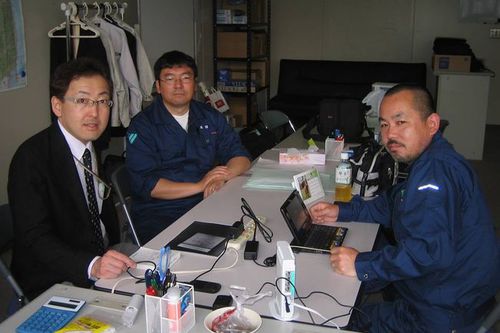August 27, 2017
Collaboration Among Individuals Strengthens Communities: Reflections on the 2011 Tohoku Earthquake
Keywords: Civil Society / Local Issues Disaster Reconstruction

Copyright 2017 Miwako Hosoda All Rights Reserved.
Tohoku Fukko Nikki (Tohoku Reconstruction Diary), a weekly feature in the Tokyo Shimbun newspaper, delivers news stories on reconstruction efforts in communities devastated by the earthquake and tsunami that struck Japan in March 2011. The articles are written by the JKSK Yui-Yui Project, an initiative to support survivors of the 2011 disaster by the non-profit organization JKSK Empowering Women Empowering Society. This time, we present an article published in the February 14, 2017, issue that describes the need for individuals to take action.
I learned from the previous article that Sachiko Bamba, a representative of the Veteran Mothers' Society, relied on a members-only social network site rather than mass media for accurate information about the Fukushima Daiichi Nuclear Power Plant accident. She worked not with personnel from the government or organizations, but with individuals taking action independently.
There are limits to how much one can do with existing knowledge when you need to deal with extraordinary situations like disasters. Especially like in 2011 when multiple unexpected disasters (earthquake, tsunami and nuclear accident) struck at the same time, we should follow not only the usual disaster response procedures, we also need individuals with a high level of expertise who can take the initiative on their own.
When citizens received messages through social networking systems that medical facilities were not functioning in Hama-dori region of Fukushima, a region within a 30 kilometer radius from the damaged nuclear plant, they asked themselves what they could do to help, and contacted medical institutions. Responding to their call, medical professionals and experts from around Japan went to the region. They stayed in the affected areas to identify their needs and carried out actions to address them. From here, spontaneous cooperation developed among people who had the motivation to take action.
Japan is now facing significant changes. Due to the growing aging population, decreasing birth rates and greater diversity of lifestyles, there is a rapid increase in the number of cases where issues cannot be resolved by simply relying on the standard solutions. One of the difficulties Sachiko Bamba faced was closing down of the hospital she usually goes to due to a shortage of nurses. This can happen anywhere and not only in disaster-stricken areas.
In fact, the solutions to issues in disaster-stricken areas can serve as models to cope with issues facing many other regions of Japan, including declines in population, shortages of healthcare workers, and changes in industrial structure. While the 2011 earthquake and tsunami brought to surface the rigidity of many of today's social systems, it also highlighted the strength of communities. The experiences of the Tohoku region certainly provide important lessons for the future of all regions.
Miwako Hosoda
Vice President
Seisa University
Related
"JFS Newsletter"
- Aiming to Build New Communities in Earthquake-Stricken Areas: Ishinomaki Jichiren's Initiatives
- Investment to Help Disaster-affected Areas -- Initiative of Disaster Area Support Funds Initiative
- Disaster-Affected Ishinomaki -- Present Status (Part 2)
- Disaster-Affected Ishinomaki -- Present Status (Part 1)
- Tohoku and the World: 5 Years Since The Great East Japan Earthquake and Tsunami


